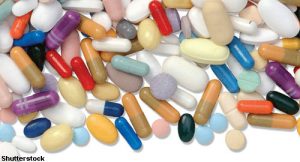 EULAR 2021—Christ et al. reported the results of a proof-of-concept study of the efficacy and safety of tocilizumab monotherapy after ultra-short glucocorticoid treatment in patients with newly diagnosed giant cell arteritis (GCA).1 Newly diagnosed GCA occurred within four weeks of the screening visit for this study. Glucocorticoids have been the gold standard for treating GCA, but their long-term—and even short-term—use is fraught with numerous adverse effects, including blindness. Thus, better treatment options are desirable. In two previous randomized controlled studies, tocilizumab exhibited at least a 50% glucocorticoid-sparing effect when administered to patients with GCA.2,3
EULAR 2021—Christ et al. reported the results of a proof-of-concept study of the efficacy and safety of tocilizumab monotherapy after ultra-short glucocorticoid treatment in patients with newly diagnosed giant cell arteritis (GCA).1 Newly diagnosed GCA occurred within four weeks of the screening visit for this study. Glucocorticoids have been the gold standard for treating GCA, but their long-term—and even short-term—use is fraught with numerous adverse effects, including blindness. Thus, better treatment options are desirable. In two previous randomized controlled studies, tocilizumab exhibited at least a 50% glucocorticoid-sparing effect when administered to patients with GCA.2,3
The GUSTO (Giant Cell Arteritis Treatment with Ultra-Short Glucocorticoid and Tocilizumab) trial enrolled patients with newly diagnosed GCA (n=18). This study was an investigator-initiated, single-arm, single-center, open-label clinical trial using Simon’s two-stage design (NCT03745586) to establish whether the proportion of study responses is high enough to recommend the drug go to the next clinical trial phase.1
All patients received 500 mg of intravenous methylprednisolone for three consecutive days. Subsequently, glucocorticoid treatment was discontinued, and tocilizumab was administered to patients intravenously at a dose of 8 mg/kg of body weight, followed by the administration of 162 mg of subcutaneous tocilizumab weekly from day 10 to week 52. The primary endpoint was the proportion of patients who achieved remission within 31 days with no relapse at week 24. The secondary endpoint was the proportion of patients who achieved complete relapse-free disease remission at week 52.
Remission was defined as the disappearance of GCA symptoms. Partial remission included having the presence of mild symptoms. After the first 12 patients reached the primary endpoint, an interim analysis was completed.
Results
Twelve of the 18 patients were female with a median age of 71 years (range: 64–78 years old). Patients had multiple symptoms: 15 had cranial symptoms, 10 had jaw claudication, six had visual symptoms, 10 suffered from polymyalgia rheumatica symptoms, 16 had a positive cranial ultrasound and 13 had positive histopathology.
At the interim analysis, only three of 12 patients (25%) had achieved the primary endpoint of remission within 31 days and remained relapse-free up to week 24. Additionally, 14 patients achieved remission within 24 weeks (the mean duration was 11.1 weeks), and 13 of these patients (72%) had no disease relapse up to week 52.
Of all the patients in this small study, three of 18 were non-responders. Two of these patients had persistent cranial symptoms, with one experiencing new-onset anterior ischemic optic neuropathy. The third patient had persistent polymyalgia rheumatica symptoms and commenced rescue glucocorticoid treatment. Two patients discontinued the study due to adverse events (e.g., hepatopathy and diverticulitis), with one discontinuing after remission was achieved.
This study found tocilizumab treatment after three days of pulse-dosing with 500 mg of methylprednisolone maintained remission in 72% of patients with GCA (13 of 18 patients) up to week 52. The data presented provides additional evidence for blocking interleukin 6 with tocilizumab in patients with GCA.
Michele B. Kaufman, PharmD, BCGP, is a freelance medical writer based in New York City and a pharmacist at New York Presbyterian Lower Manhattan Hospital.
References
- Christ L, Seitz L, Scholz G et al. A proof-of-concept study to assess the efficacy of tocilizumab monotherapy after ultra-short glucocorticoid administration to treat giant cell arteritis—The GUSTO trial [abstract OP0061] Ann Rheum Dis. 2021 Jun;80(suppl 1): 33.
- Villiger PM, Adler S, Kuchen S et al. Tocilizumab for induction and maintenance of remission in giant cell arteritis: A phase 2, randomised, double-blind, placebo-controlled trial. Lancet. 2016 May 7;387(10031):1921–1927. Epub 2016 Mar 4.
- Stone JH, Tuckwell K, Dimonaco S, et al. Trial of tocilizumab in giant cell arteritis. N Engl J Med. 2017 Jul 27;377(4):317–328.

